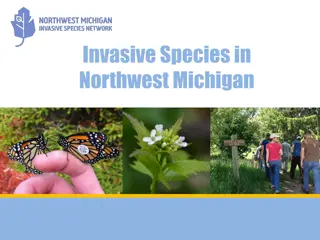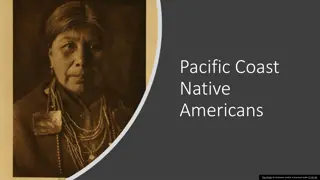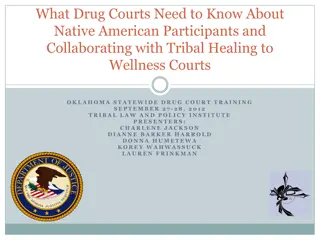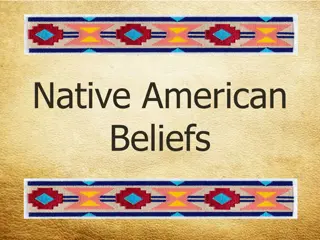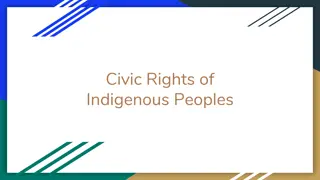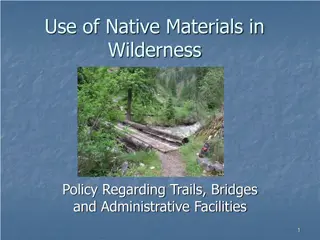
Native American Societies Before European Arrival
Explore the diverse societies of Native Americans in North America around 1492, from cultural practices based on the environment to specific practices of various tribes in regions like California, the Northwest Coast, Southwest, and Eastern Woodlands. Learn about trading networks, land use beliefs, and more.
Download Presentation

Please find below an Image/Link to download the presentation.
The content on the website is provided AS IS for your information and personal use only. It may not be sold, licensed, or shared on other websites without obtaining consent from the author. If you encounter any issues during the download, it is possible that the publisher has removed the file from their server.
You are allowed to download the files provided on this website for personal or commercial use, subject to the condition that they are used lawfully. All files are the property of their respective owners.
The content on the website is provided AS IS for your information and personal use only. It may not be sold, licensed, or shared on other websites without obtaining consent from the author.
E N D
Presentation Transcript
DO NOW Study for quiz 3 minutes Due Thursday-French and Indian War Reading Notes.
North American Societies Around 1492 Native Americans Live in Diverse Societies Cultural Practices were based on environment
California Kashaya Pomo hunt waterfowl along northwest coast Yurok, Hupa gather acorns in forests, fish in mountain streams
Northwest Coast Large communities live along streams, seashore, and in forests Kwakiutl, Nootka, Haida gather shellfish, hunt whales, otters, seals Place totems, symbols of ancestral spirits, on masks, boats, poles Potlatches families give away possessions in special ceremonies
Southwest By 1300, Pueblo settle near waterways, build multistory houses Hopi, Acoma live near cliffs, develop irrigation systems Grow corn, beans, squash; build kivas, underground ceremonial rooms
Eastern Woodlands Tribes like Iroquois build villages in forests; farm, hunt, gather People develop woodworking tools, craft objects from wood Northeast rely on animals for food, clothing; Southeast, on farming Iroquois Confederacy - a group of six related native American nations (Mohawk, Onondaga, Oneida, Cayuga, Seneca, and Tuscarora) who had banded together to form a political entity to preserve peace
Native Americans Share Cultural Patterns Trading Networks Trade one of biggest factors in bringing tribes into contact Groups specialize in processing or making different products Traders on transcontinental network trade items from far-off places
Native Americans Share Cultural Patterns Land Use Native Americans consider land the source of life, not to be sold Disturb it only for important reasons, like food gathering, farming
Native Americans Share Cultural Patterns Religious Beliefs People believe nature is filled with spirits; ancestors guide people Some cultures believe in one supreme being
Native Americans Share Cultural Patterns Social Organization Bonds of kinship, ties among relatives, ensure customs are passed on Division of labor tasks by gender, age, status creates social order Groups organized by families; some in clans with common ancestor
DO NOW Take Out Homework Respond to the question: Why did the Native American Tribes vary in cultural practices?
The Colonist Reasons for Coming to America
Who Came to America Thousands of European men, women, and children traveled to the colonies during 1629 to 1640 to look for a better life. This period was called the Great Migration.
Who Came to America Many colonists came as indentured servants. Colonial landowners would pay for the indentured servants travel to the colonies and in return the person would work for the landowner for an agreed upon length.
Who Came to America During the time the person was indentured, they gave up certain freedoms while they worked. It was very similar to slavery, but these people choose to become indentured servants and could eventually obtain freedom. Once the debt was worked off, the indentured servant was free to start their own life in the colonies.
Why They Came to America Push Factors: factors that cause to want to move people away from a location. Pull Factors: Factors that appeal to a person about the new location
PUSH FACTORS PULL FACTORS NEW WORLD
Why They Came to America Rulers wanted new people to travel to the New World because that could expand their empires Charters were granted to business people, like the Virginia Company, who then helped poorer English make the journey to the New World and settle.
Why They Came to America Free or Cheap Land When the Spanish found gold and riches with the Native Americans in Mexico, many other colonists believed they could find gold and riches for themselves
Why They Came to America Poverty, Political turmoil, famine, and disease. Colonists wanted new opportunities and thought they could find them in the colonies.
Why They Came to America Pilgrims (Plymouth) wanted to escape persecution and separate from the Church of England Puritans (Massachusetts) wanted to purify the Church of England Quakers (Pennsylvania) wanted to escape religious persecution Catholics (Maryland) Wanted to escape religious persecution
Why They Came to America: Results The Puritans and Pilgrims came and established settlements in order to worship God in the way they wanted, but they were NOT tolerant of other religions. Catholics, Quakers, and Jews are examples of groups who created new settlements for religious tolerance and freedom to practice their beliefs however they wished.
Why They Came to America: Results Native Americans were pushed out of land because the settlers did not understand how Native Americans viewed land. Distinctive colonies developed based on the reasons for coming to the New World.


